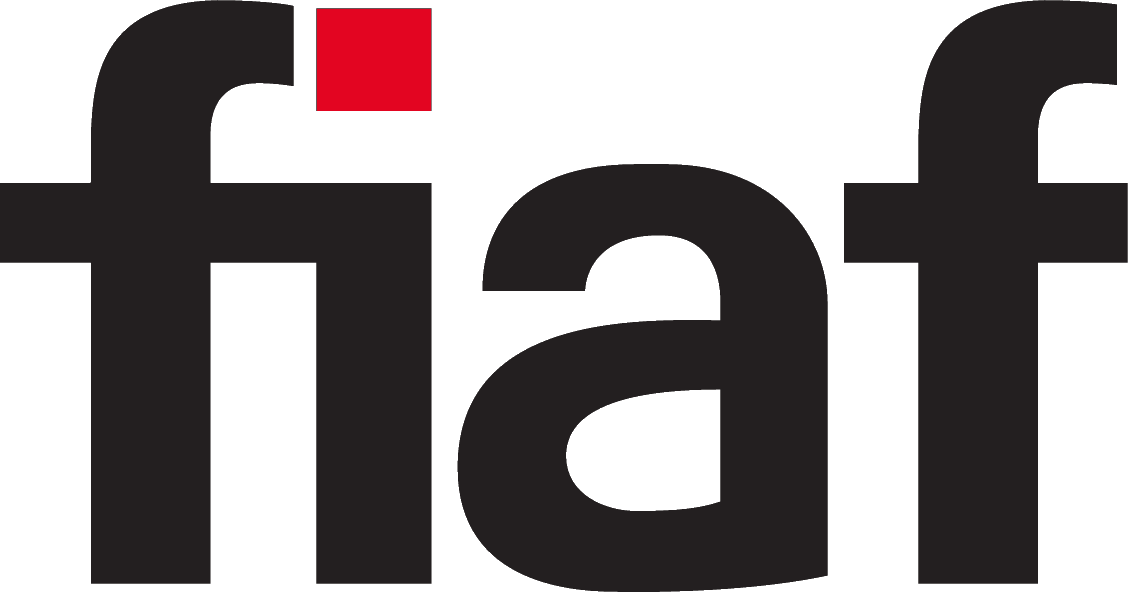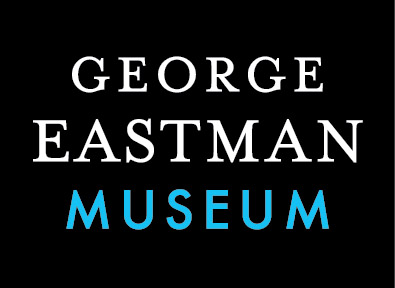Three-Color Technicolor(1932–1955)
A three-color camera and printing system used widely in the United States and United Kingdom.
Film Explorer
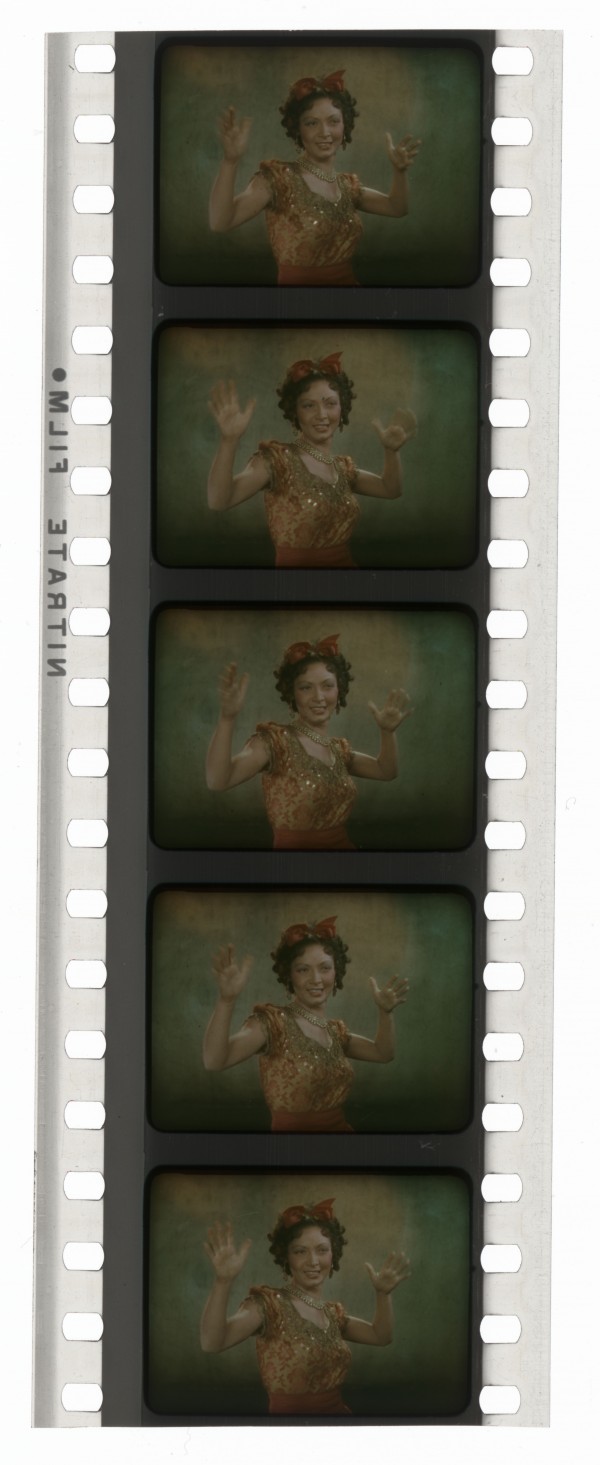
La Cucaracha (1934), one of the first live-action short films photographed in three-color Technicolor.
Karl Thiede, Burbank, CA, United States.
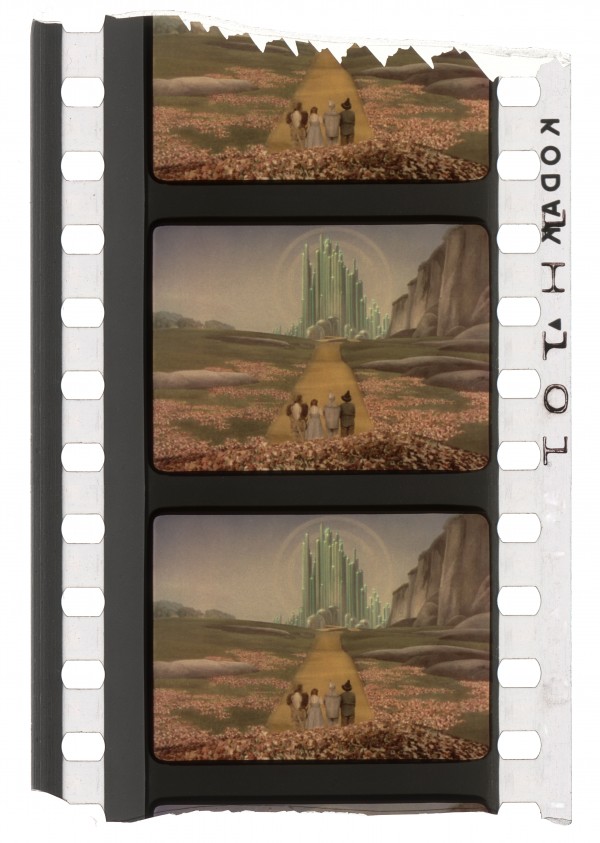
The Wizard of Oz (1939) is arguably one the most famous three-color Technicolor releases. The characters and settings of Frank L. Baum’s fantasy world were ideal subjects for color cinematography. Original prints from the 1930s, like this one, were more muted than recent home video releases.
Karl Thiede, Burbank, CA, United States.
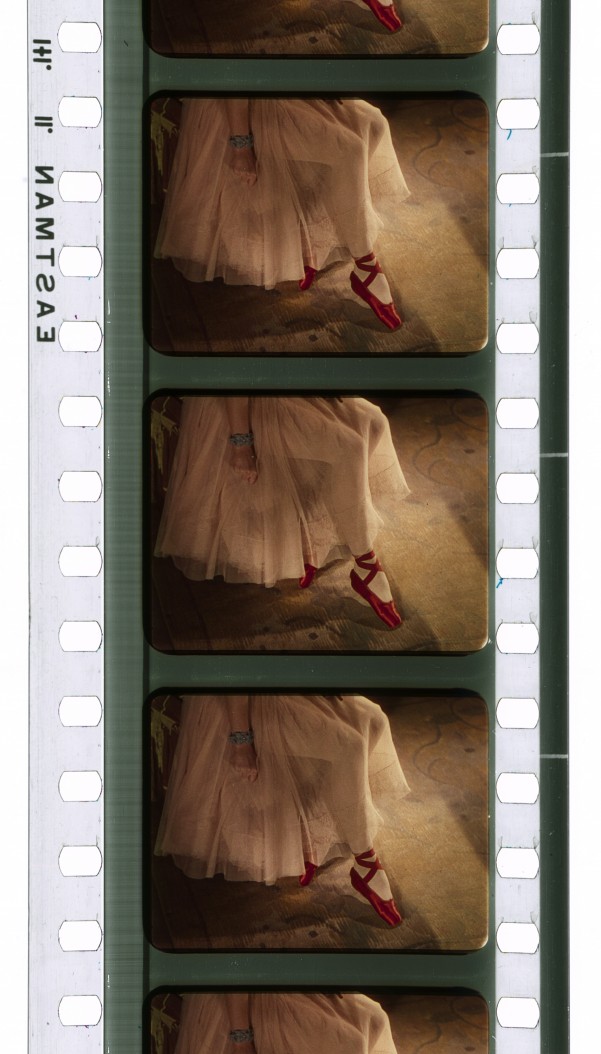
On The Red Shoes (1948) cinematographer Jack Cardiff was influenced by the paintings of the great masters to create his own “paintings in motion”. In preparing his compositions, colors and lighting, Cardiff relied on the concept drawings of Hein Heckroth. In this sense, The Red Shoes is often defined as representing the accession of color film to total art.
Martin Scorsese Collection, George Eastman Museum, Rochester, NY, United States.
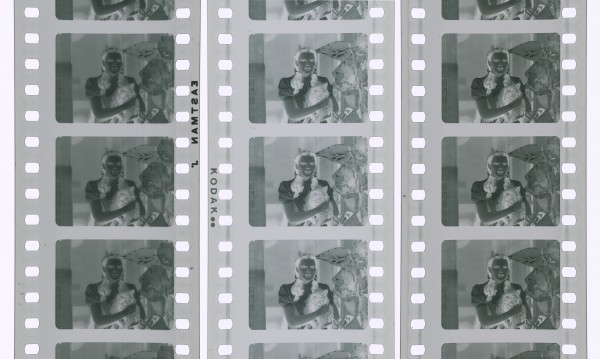
Judy Garland in The Wizard of Oz (1939). The three negatives for cyan, yellow and magenta records each display different densities of gray on the B/W emulsion.
Metro-Goldwyn-Mayer Collection, George Eastman Museum, Rochester, NY, United States.
Identification
20.96mm x 15.29 mm (0.825 in x 0.602 in).
Bell & Howell perforations were used from 1932 to c.1953. Thereafter, Kodak Standard perforations were used.
Technicolor prints were made using the imbibition process, where the dyes were transferred from a matrix or relief film onto a “blank” film. Until the 1950s, the frameline and a faint “key image” to improve image sharpness were printed in B/W on Technicolor prints. The frameline appears noticeably gray and was intended to prevent the scattering of light from the projector onto the images. This operation was carried out after the sound had been printed on the positive but before the imbibition procedure, using a Bell & Howell Model D printer.
Typically, Eastman Kodak on US prints. Sometimes, Ilford stock was used for British prints.
Cellulose nitrate (1932 to c.1951); Cellulose triacetate (c.1951 onwards)
1
Until 1939 Technicolor used dyes from multiple sources including I.G. Farben, the most important dye manufacturer in Germany. During World War II, Technicolor was forced to use American dyes from Dupont, among others. The dyes used by the British Technicolor lab differed from the ones used in Hollywood.
Color by Technicolor; Colour by Technicolor
The B/W soundtrack was printed on the blank positive (before the imbibition contact printing) with a Model D Bell & Howell printer. Variable-density and variable-area soundtracks were both used on Technicolor prints.
(typically)
21.95mm x 16.00 mm (0.864 in x 0.630 in).
B/W. The red (cyan) and green (magenta) receiving negatives were panchromatic, and the blue (yellow) receiving negative was orthochromatic. Eastman Kodak stock was used predominantly. Some 1930s productions were photographed on Dupont negative.
Standard Eastman Kodak edge markings (most of the time).
History
Three-color Technicolor (also known as Technicolor system number 4) increased the potential of natural-color photography and was first shown on the screen with Walt Disney's animated short Flowers and Trees, released in 1932. The process was initially championed by a group of producers with a strong taste for novelty and special effects, including the man behind King Kong (1933), Merian C. Cooper. During the spring of 1933, Cooper, and investors John Hay (Jock) Whitney and Cornelius (Sonny) Vanderbilt formed Pioneer Pictures, with a distribution deal with RKO. Cooper and Whitney signed a contract with Technicolor in May 1933 for the production of eight films. This contract can be considered a commercial tour de force on the part of Technicolor president Herbert Kalmus at a time when Technicolor had yet to find its audience. Given the abundance of two-color Technicolor musicals during what was called the “color boom” in the years 1929–1930, it was not surprising that this genre was chosen for Pioneer’s first three-color, live-action short film. With its bold use of colored lighting and careful production design, La Cucaracha (1934) made a strong impression on audiences for its novelty and aesthetic effects.
It was in 1935 that the Technicolor company established its brand and its know-how worldwide, most notably with the feature film Becky Sharp, directed by Rouben Mamoulian and produced by Pioneer Pictures. This year represents arguably the most important year for the sale and operation of Technicolor. But, behind the scenes, Herbert T. Kalmus was engaged in a merciless commercial war to win out against the company’s competitors.
Technicolor provided color consultants (headed by Natalie Kalmus) to each production to ensure colors were carefully coordinated on set with Technicolor printing in mind. This was stipulated by contract in the early days of the Technicolor between Herbert Kalmus and the production companies. Different consultants divided the work between the studios in the late 1930s. Natalie Kalmus supervised the majority of the films and it was her name that appeared in the credits, while the others were customarily credited as assistants.
Technicolor operated a laboratory in Hollywood, California, but it also had the ambition to go global early on, establishing itself in Europe with the opening of a British laboratory in 1936 in Harmondsworth outside London. The process was therefore used predominantly by American and British studios. In the UK, the most notable Technicolor releases were made by the filmmaking duo Michael Powell and Emeric Pressburger, The Life and Death of Colonel Blimp (1943) or The Red Shoes (1948), for example. The process was used less in mainland Europe because of the high production costs and the onset of World War II. A Technicolor plant was set up in France in the mid-1950s, close to the GTC laboratories in Joinville-le-Pont, near Paris, at a time when Eastmancolor and Agfacolor color negatives had already become the new standard for color filming. This French lab was short-lived, and was closed around 1960. The French filmmaker Jean Renoir was one of the few filmmakers to use the process in France during this period – his French Cancan (1954) being one of the last, and greatest, of the three-color Technicolor films.
In the early 1950s, the company started a transition to making imbibition prints from Eastmancolor negatives. The new credit “Print by Technicolor” was subsequently used. Prior to this, films shot and printed in Technicolor received the credit “Color by Technicolor”. Universal’s Foxfire (1955), in the US, and Ealing’s The Ladykillers (1955) in the UK, were among the last productions photographed using Technicolor cameras.
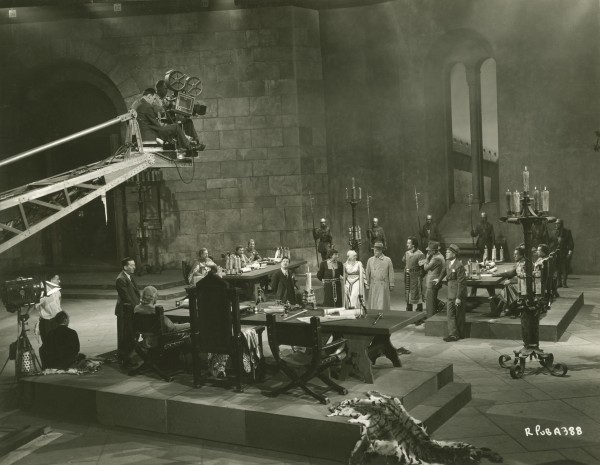
Technicolor was used on hundreds of feature films in Hollywood and Britain between 1935 and 1955. Here we see the bulky Technicolor camera mounted for a crane shot on the set of The Adventures of Robin Hood (1938). Technicolor cameraman W. Howard Greene can be seen standing below the crane.
Warner Bros./First National Keybooks Collection, George Eastman Museum, Rochester, NY, United States.
Selected Filmography
Notable for its innovative color art direction and aesthetic effects. Although it is often erroneously credited as the first three-color Technicolor live action film, La Cucaracha was actually the eleventh short photographed.
Notable for its innovative color art direction and aesthetic effects. Although it is often erroneously credited as the first three-color Technicolor live action film, La Cucaracha was actually the eleventh short photographed.
The first three-color Technicolor cartoons, including Flowers and Trees, were shot using a bulky three-strip camera. From about 1936, most Technicolor cartoons were photographed using successive exposure.
The first three-color Technicolor cartoons, including Flowers and Trees, were shot using a bulky three-strip camera. From about 1936, most Technicolor cartoons were photographed using successive exposure.
Technology
Camera
The Technicolor three-color camera made it possible to shoot with the full spectrum, using three separate B/W negatives to capture red, green and blue color information. According to Kevin Brownlow, the filmmaker Michael Powell nicknamed the bulky camera and sound blimp “the enchanted cottage”. Its construction was a technical challenge: it required three B/W negatives, simultaneously recording the three colors via a system of prisms and filters within the camera. The central innovations of the three-color camera were the bi-pack mounting of the film and the creation of a new prism design.
In short, the process consisted of loading the two negatives recording the red and the blue in contact in the camera, effectively sandwiched together emulsion-against-emulsion (hence the term “bi-pack”). The third negative, recording green, was loaded separately, positioned with the emulsion in front of the lens. The B/W emulsions capturing the red and green records were panchromatic (sensitive to all colors) and were cut from the same strip of raw stock. The negative for the blue record was an orthochromatic film only sensitive to blue light. The first beam of light coming directly from the lens passed directly through the prism and a green filter to record the green record. This green separation contained the most sharpness and definition due to the fact that it received the most exposure to light. Simultaneously, the prism reflected a second beam at a right angle and transmitted the blue and red light to the two negatives sandwiched together in bi-pack.
(Animated films were typically photographed using “regular” B/W cameras with the successive exposure system (SE), which captured the three color records one after the other onto one strip of film.)
Printing
Technicolor conceived a film-matrix to create the imbibition or dye-transfer process (also used for the two-color system #3). Three matrices were optically printed from the negatives. After processing and treatment, each matrix had a clear emulsion layer in relief that absorbed and then transferred a dye onto the positive film. The positive receiving film was called the blank and was mainly manufactured by Kodak, as were the negatives. The coloring by imbibition was done with three complementary dyes: yellow, cyan, and magenta. Cyan was complementary to the red negative, magenta to the green negative and yellow to the blue negative.
The three matrices were immersed one-by-one in a tank filled with dye which was connected to the printer. The dyes used for pressing were extremely pure, without any solids, as they had to be absorbed evenly in relation to the density of the image. The matrix and the blank were then pressed and held together on a long metal “pin belt”, which held the films in perfect registration. It took approximately 45 seconds for the dye to be transferred to the positive at a pressing temperature of 43°C. Hot water was used to dissolve any unexposed part of the image. The yellow-colored matrix was the first layer used to come into intimate contact with the blank. The term “decro” was used by Technicolor to describe the process of washing off excess dye from the matrix before pressing it to the blank. This step modulated the contrast, grading the final positive.
Technicolor constantly refined its process. Years of research and experimentation was undertaken, as demonstrated by the paper archives and numerous samples of dyes preserved by the George Eastman Museum. The composition of the dyes was regularly modified or improved. Modifications could also be made according to specific requests from producers, directors, and cinematographers, and the internal correspondence of the chemist John M. Andreas, demonstrates the neverending quest of improving the dyes. The imbibition printers for Technicolor’s three-color system were manufactured by I. B. Corporation, a company founded by former Technicolor employees, including the most influential of them, Daniel F. Comstock, who patented the first imbibition machine used for Technicolor No. 3.
Overall, the three-negative process did not allow for long-focus filming, and did not achieve the optical possibilities that B/W could offer at the same time. It was not until Eastman and Ansco color negatives arrived in the 1950s, that the depth of field possibilities on color films were increased. In 1956 the three-color camera was already obsolete, even though Technicolor continued the IB printing until the 1970s.
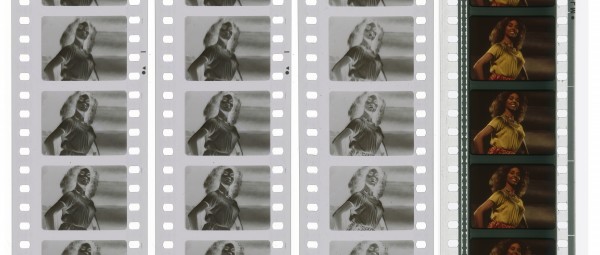
Jennifer Jones in Duel in the Sun (1946). Yellow (blue), cyan (red) and magenta (green) camera negatives alongside the resulting 35mm dye-transfer print.
The Museum of Modern Art, New York, NY, United States. George Eastman Museum, Rochester, NY, United States.
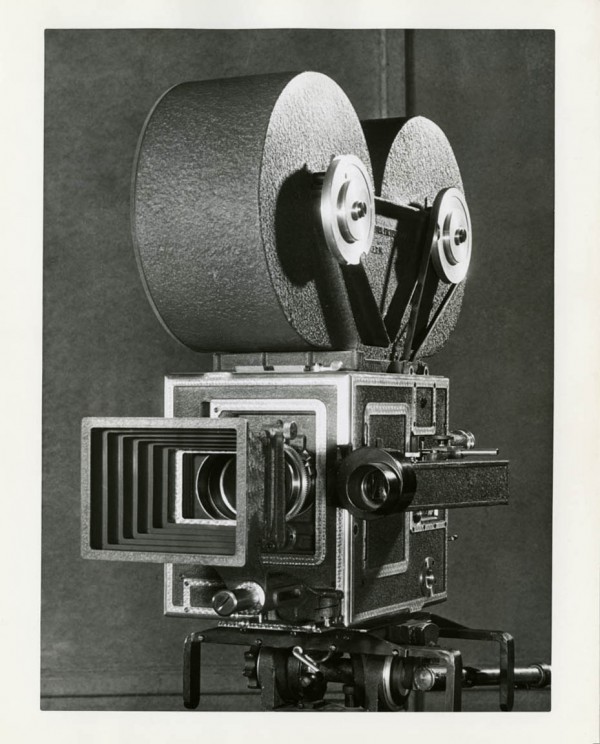
The Technicolor Model D three-strip camera. There were three series of Technicolor cameras classified by the letters C (the very first model), E (used for special effects shots) and D. The D series (later DF) were studio cameras used for live action. The C series represented a total of three cameras and were mainly used for animation and intertitles. The three-color camera was designed by J. Arthur Ball and Gerald Rackett in 1931. The camera was built by Technicolor in collaboration with the Mitchell Camera Corporation, which manufactured the parts, even though Technicolor retained exclusive rights and rented them to studios. Ultimately, 29 D cameras were manufactured (22 in Hollywood and 7 in the UK).
Technicolor Corporate Archive, George Eastman Museum, Rochester, NY, United States.
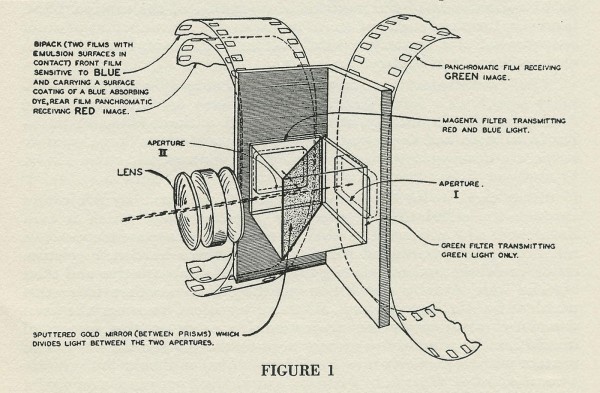
Inside the three-color camera, with the three negatives including the bi-pack system and the beam-splitting prism.
“The Three Color Process”. Technical Bulletin, May 31, 1935. Technicolor Corporate Archive, George Eastman Museum, Rochester, NY.
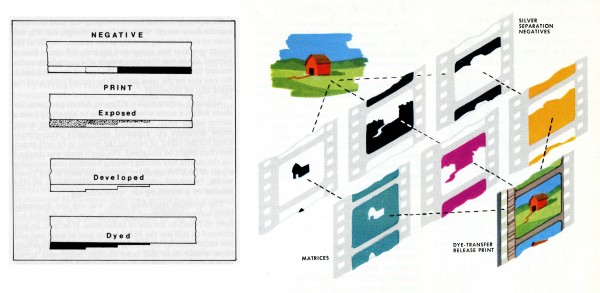
Left: The matrix films were printed from the negative and absorbed each dye on the gelatin relief. Right: The entire printing system: the three B/W negatives; the cyan, magenta, and yellow matrices with the dyes, and the final imbibition (IB) print for projection in theaters.
Left: Happé, Bernard L. (1985). “80 Years of Color Cinematography”, BKSTS Journal (April 1985): p. 243. Right: Anon. (1955). “Current Techniques of 35mm Color Motion Picture Printing”, Technicolor News and Views, XVII:1 (April).
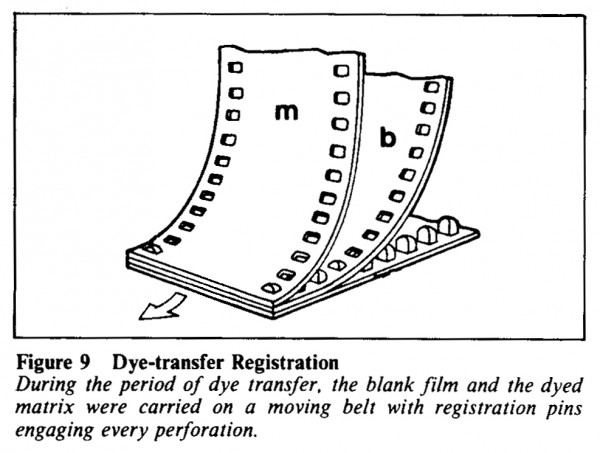
The dyed matrix film (top) and the blank receiving film (middle) were held together in registration by the long metal pinbelt (bottom) for the time it took for the dyes to fully transfer from the matrix to the blank film. This had to be completed three times, once for each dye color.
Happé, Bernard L. (1985). “80 Years of Color Cinematography”, BKSTS Journal (April).
References
Andreas, John M. (1940). “Components for Imbibition Dye System”, correspondence with Gerald F. Rackett, May 31, 1940, John M. Andreas Collection, George Eastman Museum, Rochester, NY.
Anon. (1955). “Current Techniques of 35mm Color Motion Picture Printing”. Technicolor News & Views, XVII:1 (April): pp. 4–5
Cornwell-Clyne, Adrian(1951). Colour Cinematography. 3rd rev. and enlarged edn. London: Champman & Hall.
Higgins, Scott (2007). Harnessing the Technicolor Rainbow: Color Design in the 1930s. Austin, TX: University of Texas Press.
Huntley, John (1949). British Technicolor Films. London: Skelton Robinson.
Kalmus, Herbert T. & Eleanor King Kalmus (1993). Mr. Technicolor. Absecon, NJ: Magic Image Filmbooks.
Kalmus, Natalie (1938). “Colour”. In Stephen Watts & Arthur Barker. Behind the Screen, How Films Are Made, Dodger Publishers, London.
Layton, James & David Pierce (2015). The Dawn of Technicolor, 1915–1935. Rochester, NY: George Eastman House.
Leigh, Allen (1950). “New Technicolor System Tested by Directors of Photography”. American Cinematographer, 31:12 (December): p. 414.
Powell Michael (1986). A Life in Movies: An Autobiography. London: Methuen.
Ruivo, Céline. 2016. Le Technicolor trichrome, histoire d’un procédé et enjeux de sa restauration. Doctoral dissertation, Université Paris III, Sorbonne nouvelle.
Ryan, Roderick T. (1977). A History of Motion Picture Color Technology, 98. London: Focal Press.
Selznick, David (1939). Letter to Hal Kern (March 9, 1939). Harry Ransom Center, University of Texas, Austin, DOS – Production files, 1936-1942, Gone With the Wind Technicolor, BK no. 362, 192/5.
Patents
Ball Joseph A. 1932. Multicolor Photography with Bi-Packs, US Patent 1,889,030, filed June 14, 1930, patented November 29, 1932.
— 1933. Subtractive Color Photography, US Patent 1,926,255, filed March 3, 1931, patented September 12, 1933.
— 1935. Three-Color Photography, US Patent 2,000,058, filed June 22, 1931, patented May 7, 1935.
Ball Joseph A. & Gerald F. Rackett. 1937. Cinematographic Camera, US Patent 2,072,091, filed August 20, 1931, patented March 2, 1937.
Rackett Gerald F.. 1948. Cinematographic Dye Printing, US Patent 2,457,319, filed August 31, 1945, patented December 28, 1948.
Sugden Tuttle Bertha. 1933. Method of Imbibition Printing with Pure Primary Colors and Product, US Patent 1,900,140, filed March 9, 1929, patented March 7, 1933.
Followed by
Compare
Related entries
Author
Céline Ruivo is the author of a 2016 PhD dissertation titled The Three-color Technicolor: History of a Process and Challenges of its Restoration, University Paris III la Sorbonne nouvelle. She worked as the head of the film collection of La Cinémathèque française from 2011 to 2020. She is an active member of the technical commission of the International Federation of Film Archives (FIAF). She is now a post-doctoral researcher for the B-Magic project at UCLouvain in Belgium.
James Layton, Ulrich Ruedel, Jean Pierre Vescheure.
Ruivo, Céline (2024). “Three-Color Technicolor”. In James Layton (ed.), Film Atlas. www.filmatlas.com. Brussels: International Federation of Film Archives / Rochester, NY: George Eastman Museum.
